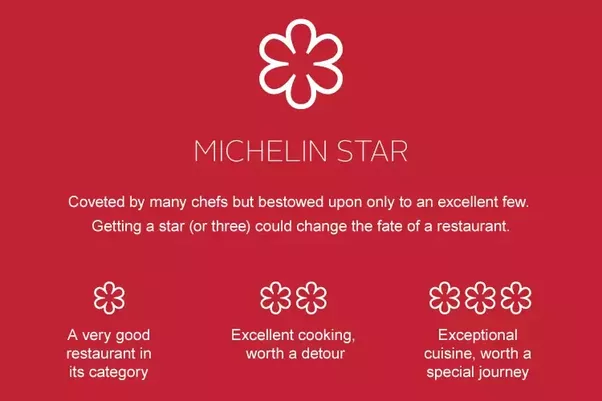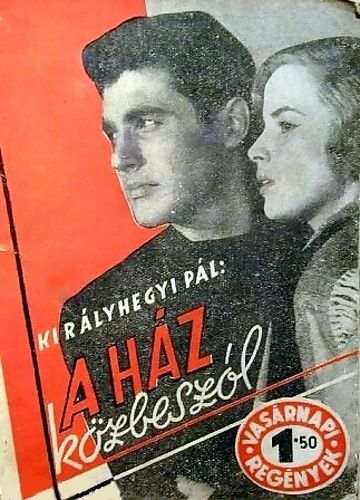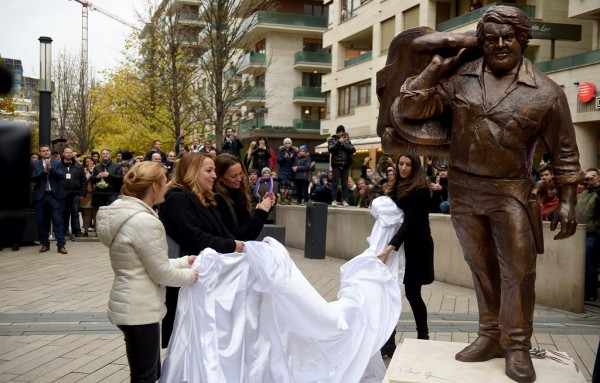Interview with Flatpack Collaborator Lorand Banner Szucs
zita kisgergely
Below is an interview with casting director and film director Lorand Banner Szűcs, who in addition to working with Flatpack on numerous projects, recently collaborated with us on the Indian feature length film Raabta, a portion of which was filmed in Hungary. We reprint this interview from Cult Critic magazine with their permission. The interviewer was writer/director Helen Wheels. Much of the interview pertains to Banner Szűcs's film Sandwich, which recently won both the Best Picture and Best Narrative Short awards at the Los Angeles Film Awards.
Banner Szűcs was born in Hungary at a time when independent filmmaking was “barely tolerated” because it was viewed a “threat to the regime;” however, by the time he started high school, filmmaking was being taught in the classroom.
Cult Critic: According to your biography, you started learning about filmmaking in a series of summer classes, where you produced your first short film. Please tell us about that experience. How old were you at the time?
Szűcs: It was a very exciting time when lots of young people came together to learn about filmmaking and theatre. I’m grateful to fate for putting me on that path. Thinking back, I had a lot of classmates who have gone on to become major theatre actors, directors and set designers. It’s quite likely that we would have been pretty difficult students elsewhere, but the opportunity to express ourselves creatively helped us through our tough teens. The summer camps really were the highlight of our whole year, especially because we got to meet professional filmmakers, whose movies were being shown in cinemas all across the country. It really was a fabulous experience and the films we made here are some of my very best memories. Our first film was a crime story that took place on a bull farm but all done with a very sour humor.
The funny thing was that our head teacher was one of the most well-known comic actors in the country, he played the main character and he brought a lot to the movie. I especially remember the soundtrack that we recorded live during the shoot played on the violin by the world-renowned violinist Félix Lajkó. He was performing locally and staying at the same place as us. We asked him to play and he agreed. It was such an inspiring time.
Cult Critic: How did that series of summer classes lead to your 25-year career with MAFILM? What was your role in the company?
Szűcs: I wasn’t even 18, and we were just coming to the end of one of our summer school sessions when I was asked if I would like to work on a proper feature film. I couldn’t believe my luck, it was like a dream come true, because, growing up in a small town, I always knew that I wanted to work in film, but I somehow always knew deep down that I didn’t stand the faintest chance. I didn’t really know anyone and it had all seemed like a fun hobby until then. Then, all of a sudden they said, “Come up to Budapest and work with us on a real film!” “What?” Of course, it didn’t take me a minute to pack my things and set off. I didn’t have anywhere to live, I didn’t have any friends in the city – all I knew was that I desperately wanted to work at the film studios. You asked me what happened over the last 25 years. It’s odd that I’ve never really realized that it’s been 25 years because the time has really flown by. I’ve worked on some incredible films and with some incredible people. I worked as a runner on the first two films, and I ran where I was told to. But that’s the way people learned the trade back then. I slowly started to make my way up the ladder, first as the second AD and then as the first AD. I worked on Hungarian and international movies one after the other, with the odd commercial in between. It was great and, even though I’ve not done it for a fair while now as I’ve been working on my own projects, it’s really good to look back on, and, now I think about it, I kind of miss it…
Cult Critic: You mentioned in your bio that you studied abroad for a year in Australia. Please tell us a bit about your studies there and the effect it had on your sensibilities (if any) as a filmmaker.
Szűcs: I traveled to Australia for a number of reasons and one of them was that I was really tired and I needed to try something new. I was lucky to be working on a screenplay and the producers weren’t at all bothered where I wrote it, they just wanted to see it finished. That meant I could travel and write it “down under”. I really loved Australia, the people there are so friendly and laidback.
Cult Critic: Upon returning to Hungary, you founded Banner Casting. What influenced that decision? Does your agency cast for commercial as well as narrative work? What are the differences (if any) between casting for commercial use and narrative? How does owning the agency feed into your own work as a filmmaker?
Szűcs: I set Banner Casting up during a time of new beginnings when a whole lot of things were changing around me. My daughter had just been born, and I was looking for a new challenge in the industry. I think I’ve managed to achieve pretty much all I set out to achieve as we are now one of the leading casting companies in the country with dozens of movies and world campaigns to our name. Only last year we made two Indian films: “Jab Harry met Sejal” and “Raabta”. I can remember preparing to work with the great Shah Rukh Kahn and I sat down to watch “Happy New Year” – I was stunned! I particularly recall a seemingly simple scene when Paduka meets the guy in the bar. It’s an important dramatic moment although not perhaps the most significant, but it was like watching the opening ceremony at the Olympics. I really couldn’t believe my eyes, and the spectacle created would have been enough to make a whole Broadway musical. I adored it!
So, as you see, we work on some great projects and I’m pleased to say that we have been joined by new colleagues who perhaps see things a little differently to me and that’s a good thing because that brings a greater spectrum of color to what we do. This means that we have commissions on which I work as the senior casting director, where I keep a close eye on things and my people can come to me if they need my help, but I don’t interfere with every single decision. A fresh approach is always a good thing. Of course, projects still come along that I wouldn’t dream of letting out of my hands because they are either really close to my heart or the director is a close colleague who has specifically asked that I cast their film.
From Sandwich
Cult Critic: What was the inspiration for your current film, “Sandwich”?
Szűcs: “Sandwich” is a film about love and empathy. It’s about a turning point, the kind of turning point that requires a lot of different factors to come together, and each and every scene encourages the viewer to make change happens in their life. Everything comes together that night to create change and that is a very rare and what I would even call a “blessed” moment. Similar moments occur to us all, and we either notice them or we don’t. If we do, they can bring meaningful change to our lives. The characters in my film choose to seize the opportunity, and that is what I set out to portray.
Cult Critic: The performances from your lead actor “The Captain” (Szabolcs Thuróczy) and young actress, “Dana” (Emma Bercovici) were phenomenal. As a director how did you work with your actors to inspire the performances that you and your actors achieved?
Szűcs: I was very fortunate with my cast. Szabolcs is an old friend and an exemplary actor. He’s a star in Hungary and people love him. I think it is significant that he is a seasoned theatre actor and that worked very well in this film. Most of the scenes are set in a military facility, and it is always a challenge as a film director to maintain tension without changing the setting. That is when an actor’s experience of being locked into a stage set proves essential. He is also a leading film actor, so I really got the best of both worlds. Emma is a wonderfully talented child actor, with more experience by the day. It was very important for me to find the special kind of naivety that she possesses, still unspoiled by the profession that has the tendency to turn children into little adults. Truly talented child actors go back to being children when they come off set at the end of the day, and they are the only ones capable of bringing the characters of genuine children to the screen.
Cult Critic: I noticed layers of symbolism in your short film. Please describe some of your thoughts on the idea that a sandwich can act as a facilitator of empathy.
Szűcs: “Sandwich” does have a lot of layers, and, if I wanted to use big words, I would say that if a viewer turns to it with an open heart, they will understand the film’s message. The sandwich in the title of the film, without giving any spoilers, symbolizes life itself. A soldier and a refugee come together thanks to a simple sandwich, that would have gone otherwise unnoticed in everyday life. This sandwich changes everything, and so it symbolizes life for the various characters, each according to their individual situation…
Cult Critic: Another interesting aspect that I noted from your work is the idea that we can learn so much from a child. In what ways do you believe we can learn about the effects of our behavior, through the eyes of a child?
Szűcs: I have already mentioned that the birth of my daughter brought great change to my life. And I have learned something new from her every day since then. Children are incredibly intelligent, and I even sometimes think that she is the one raising me. I’ve often sat and watched her at a playground as she makes friends with kids she has never met before and is soon playing along happily with them. She’s good at it. I, on the other hand, often find myself looking at a child and have a bad feeling about them…making a judgment on them. They either play too roughly for my tastes or I just have a bad feeling about them…My daughter isn’t at all bothered, it’s just another playmate to her, and she never prejudges another based on appearance, skin color, hair color, or anything else that would see an adult form an instant opinion. In many ways, Voltaire provides a motto for this film, when he says:
“Prejudice is an opinion without judgment. Thus all over the world do people inspire children with all the opinions they desire before the children can judge.”
My daughter provided the inspiration for this film at a point in my life when I was becoming increasingly aware of how quick we are to prejudge others. And, in much the same way, we see the hardened character of the Captain open up and become more accepting and understanding of others. It takes a great deal of bravery to open our heart up to others and often appears a treacherous path for the psyche… but it’s worth it…
Cult Critic: I thoroughly enjoyed your film (after the initial heart-breaking opening scene). What are you currently working on and where can we find information about you and your work?
Szűcs: Of course, the first thing on my agenda is to see “Sandwich” appear at as many festivals as possible. And I am very keen to see how audiences respond to it around the globe. But because it takes such a very long time to make a film, I don’t plan to dawdle and I am already planning my next movie that has been with me for a while now – this time a feature film. Hungarian film is, thankfully, enjoying something of a renaissance at the moment, that is good for audiences and filmmakers alike, and makes funding a little easier than in previous years. Fortunately, András Muhi is set to oversee my next film as producer ( Oscar-nominated) “Of Body and Soul”), and I am confident that this project will be ready in good time to present in Calcutta at the end of the next year. In the meantime, I would like to express my heartfelt gratitude to the Calcutta Cult Film Fest for selecting my film and I am very much looking forward to attending the award ceremony in December. Thank you India, thank you, Calcutta!
Flatpack Films is based in Budapest, Hungary. We are a film company that offers an inspiring and professional work atmosphere for our local and international clients. Since our inception, our focus has been providing the best of the best in terms of local production resources, locations, cast, and technical teams to ensure that whatever the production we facilitate, we do to highest standard possible.




















































